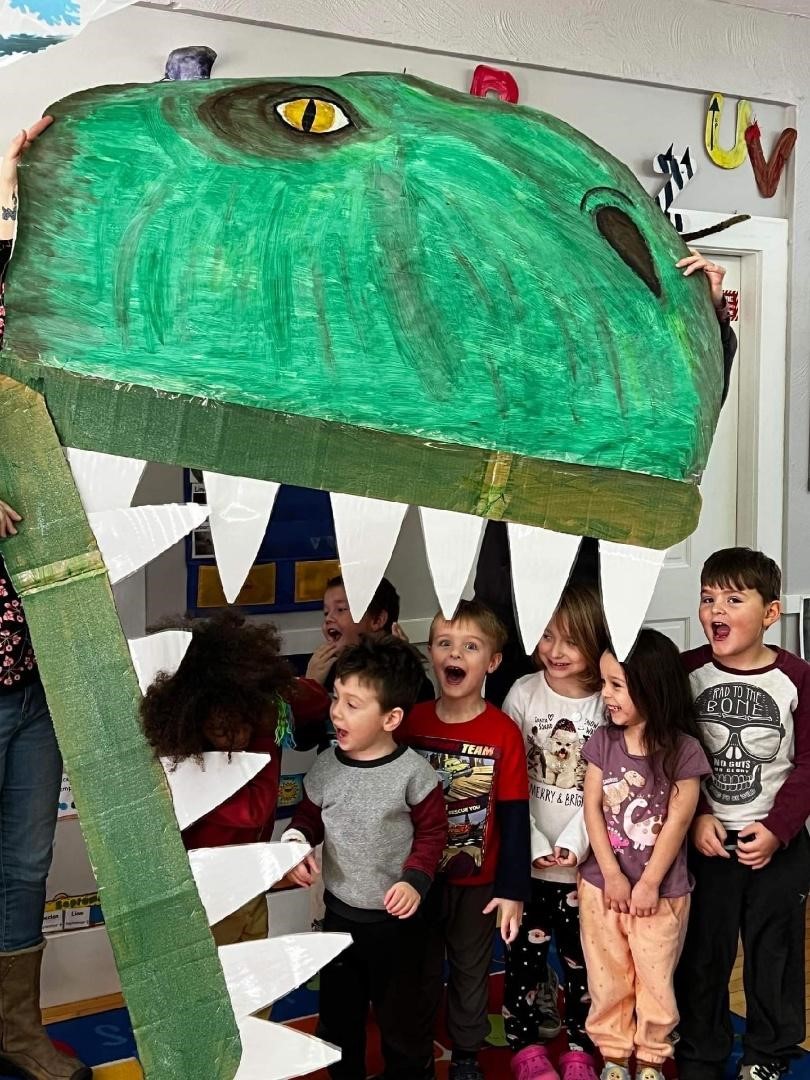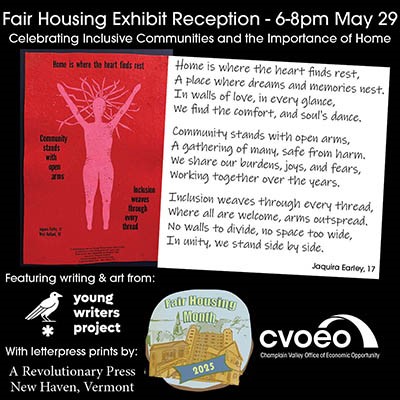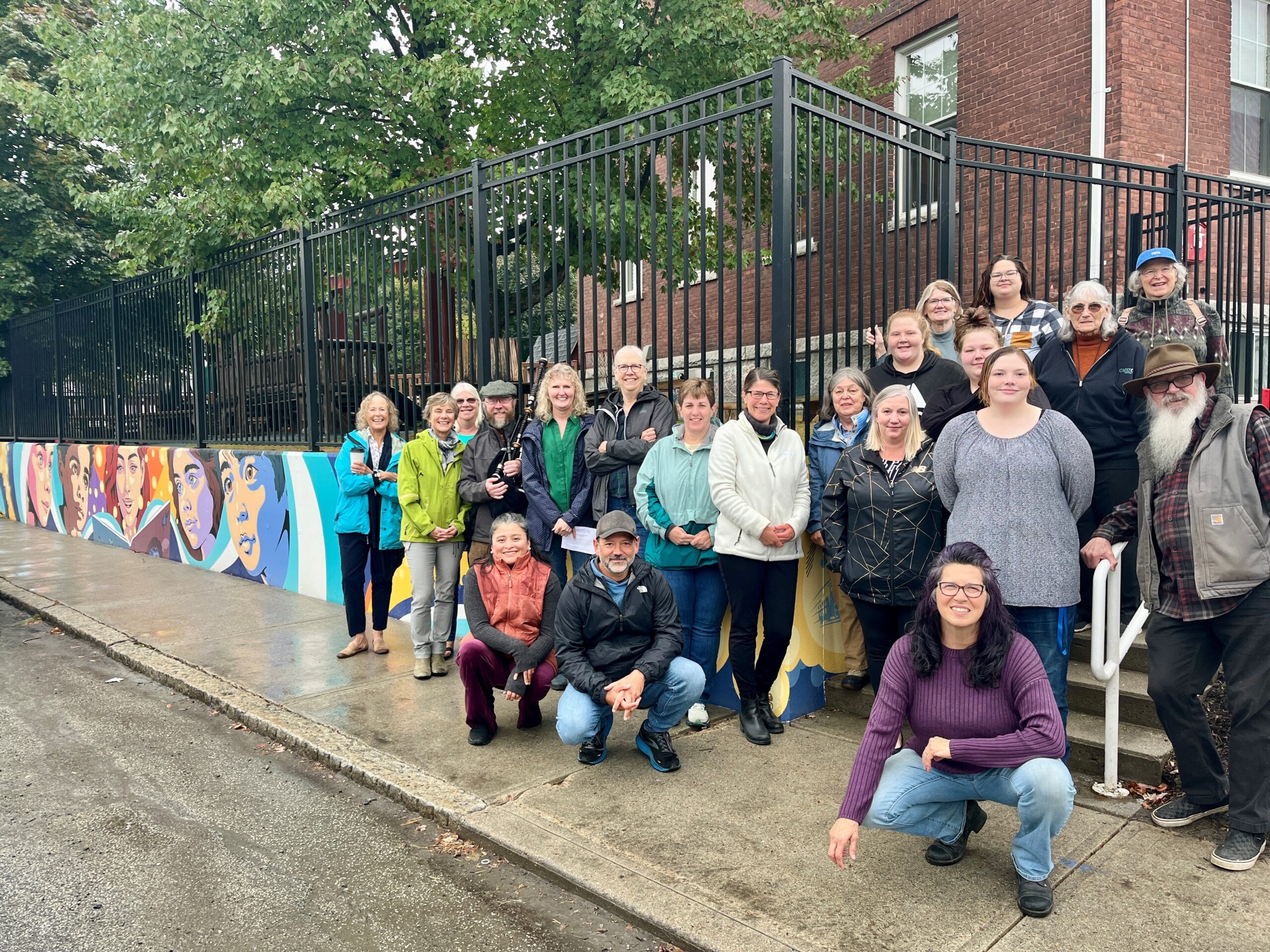
|
By Fran Lynggaard Hansen Last spring, the Children’s Place Preschool, a Head Start program in Windsor, VT, made a 25-foot life sized green anaconda out of paper while the class was focusing their learning on rainforests. The gigantic snake is still hung on one of the walls in the room. It was hand painted and measured by the children, and is so genuine looking, one parent reported having trouble walking in the room due to the realistic quality of the art work. Therefore, it was no surprise to me when the same classroom was learning about dinosaurs and a life-sized head of a Tyrannosaurus Rex greeted me as I arrived in the room that morning. The children were ecstatic with the creation they made together, so proud and pleased with their work of art. Menacing, with a beautifully painted yellow eye, crackling with red streaks as though it had stayed up too late the previous night, the T-Rex was painted green in a scaly recreation of a dinosaur’s skin. Most exciting for the children were the paper T-Rex’s gigantic triangularly shaped looming teeth protruding out of the jaw of the creature. The children were quick to tell me that the T-Rex needed those teeth since he was a carnivore. (And yes, they really did use that word!) Teachers Susan Brown, Denise Kingsbury and Meagan Hannigan took pictures of the entire class inside the mouth of the dinosaur while it was propped up against the several pieces of furniture needed to accommodate its massive size. Then individual pictures of each child, standing alone inside the immense creature were taken, each child smiling, laughing, or pretending to be frightened. “I helped paint the T-Rex!” one usually shy three-year-old enthusiastically told me.” “They weigh as much as an African elephant,” said a four-year-old, who quickly added, “but not as much as an Asian elephant, because they are smaller.” Still another three-year-old jumped into the conversation, “I want to make a triceratops next. Tri means three.” Clearly this hands-on creation had garnered a massive amount of learning. And, it was clear that the T-Rex had also been teaching this group of littles how to work together and create as a team. Lead teacher, Susan Brown explained why she decided to make a mockup of the gigantic T-Rex head. “Children are visual learners. Unless they can see what a twelve-inch tooth looks like, it’s difficult for them to imagine. When we built the head, we compared the size of the dinosaur’s teeth to a horse’s tooth. Then we compared the teeth of herbivores, to other teeth of carnivores, and finally to human teeth. What is the shape of each tooth? Flat? Curved? We asked the children why they thought teeth come in different shapes and sizes.” she asked. “The next theme the children have decided to learn about is the ocean. We won’t be making a paper whale, we’ll be walking to the pond to measure how big a blue whale is, and seeing if it could fit in our box,” she said smiling with excitement. When I arrived the following week, the Tyrannosaurus had been carefully hung high up on the wall, it’s head needing to be just under the ceiling because of its tremendous size. I was sitting with my back to the T-Rex, eating breakfast with the children. A child at the table said, “Ms. Fran, you’d better watch out. Did you know there is a hungry dinosaur watching you?” I pretended to shudder, and feigned fear as I slowly turned around to see the huge head watching me with that distinctive yellow eye that seemed to watch us all at its vantage point above our table. Its realistic nature did indeed make me pause and think that it could be sizing me up for its own breakfast. The boy sitting next to me must have read my thoughts. He broke my reverie by reaching over and patting my hand in comfort. I turned towards him as he leaned forward and whispered in my ear, with the tone of the expert he is, “Don’t worry, Ms. Fran, he can’t hurt you, he’s made out of paper.” |


